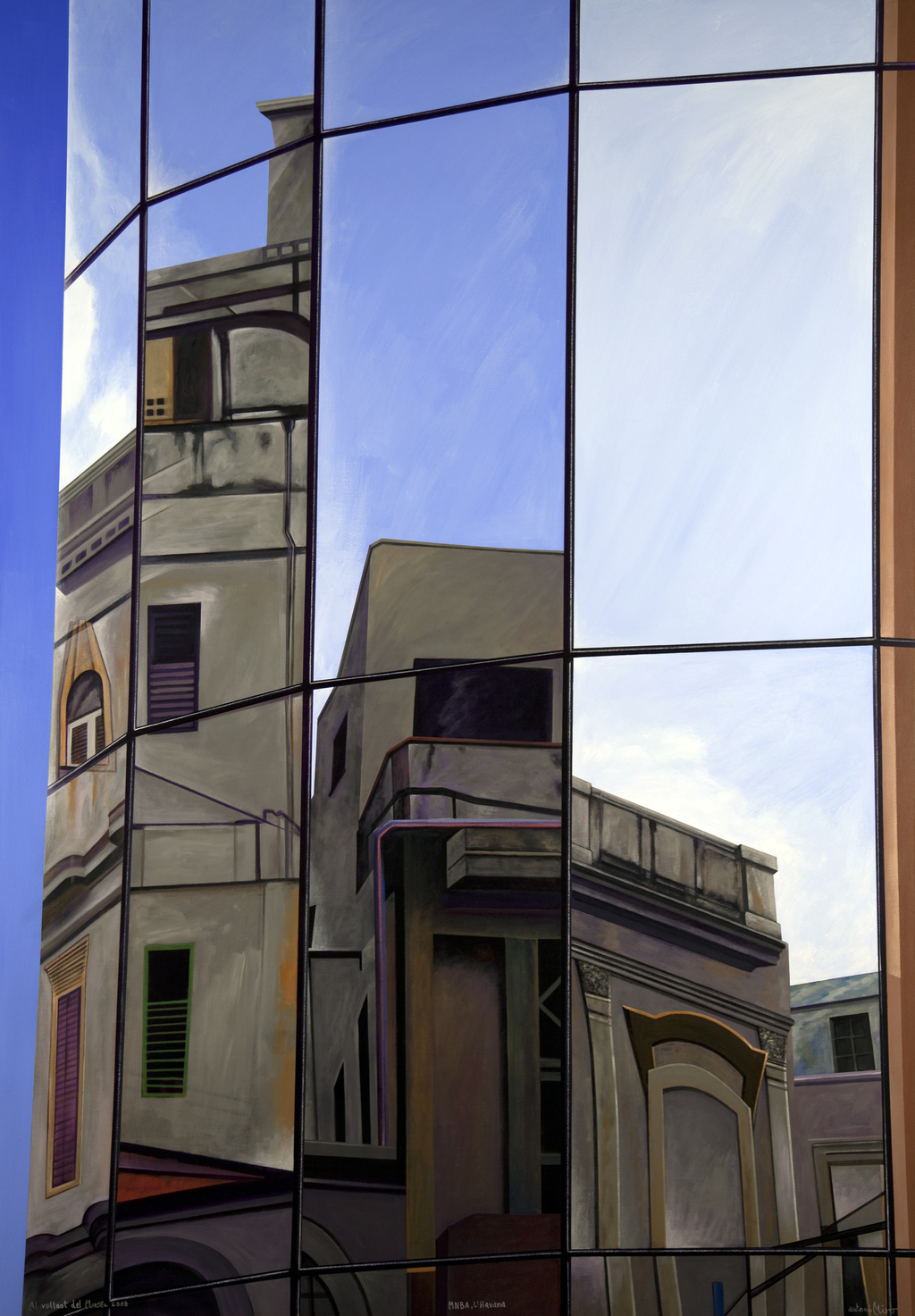Al voltant del museu (Around the museum)
This work in Miró’s series on the contradictions surrounding art museums today raises the issue of the conflict between old and modern, and of the rift between society and the artistic objects held in such institutions.
The Cuban art collection of Cuba’s National Museum of Fine Arts is housed in a building designed by the architect Alfonso Rodríguez Pichardo in 1951 and opened four years later. The Batista regime thus sited a building featuring various elements of ‘the international style’ in the heart of Old Havana. These features include the façades of the stairwells (which form part of the side walls, employing two curtain walls in a semi-circular floor layout).
The work has two subjects. Here, the idea is not to consider separately the specular parameters of buildings from another time that are projected to us. Rather, the painting refers to a joint recreation of the process of reflection as a symbolic element. Here, one can draw any number of parallels in the history of art, in which mirrors played a key role in the symbolism of depicting what lay hidden but that needed to be brought into the image to complete the message.
This idea of adding new factors that lead to the creation of meaning is complemented by the artist decision of contrasting two opposing realities: the new, the modern, and the distant versus the fragmentary environment of the colonial city.
The sky over the buildings practically makes the glazed panels at the top disappear. This figurative immateriality contrasts with the density in the lower panels. The reflections appear on panes that are faceted on a horizontal curve. This means that each building fragment casts an image of the reflected reality that has no continuity with the rest. The city’s complexity is contradictorily shown on the smooth façade of the museum. The reflective glass hides whatever may be behind it. This can be seen as a metaphor for the rift between the citizenry and art that turns museums into ‘ivory towers’.
The image stresses the vertical — something that the canvas format, the modulation of the façade framing, and the shape of the fragments reinforce. The textures of the reflected buildings are filtered and burnished by the artist to make clear the condition of an indirect filtering that signifies itself. Something similar happens with the tonally close colours despite the chromatic diversity of the real buildings.
Miró’s clever tricks faithfully render the real scene. Yet the work’s meaning is conveyed less by his consummate skill and more by the artist’s choices and effort in reproducing the scene as a speculative reflection, not in the literal sense but rather as a concept.
Santiago Pastor Vila
